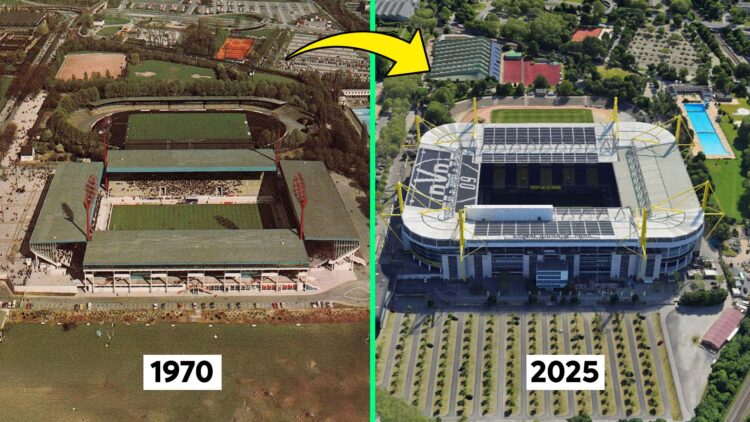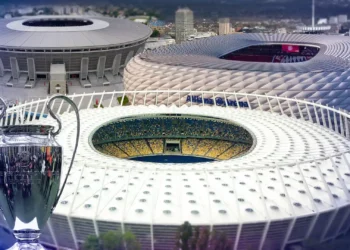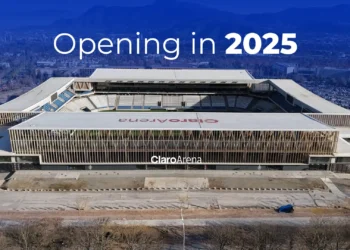Over the decades, some of the most iconic football stadiums have undergone major transformations to adapt to modern times, meet fan expectations, and accommodate the growth of top clubs. Here are 10 stadiums that have gone through major transformations throughout their history.
1. Camp Nou (Barcelona, Spain)

- Opened: 1957
- Major transformations:
- Capacity expansion in the 1980s and 1990s.
- Infrastructure improvements and modernization in the 2000s.
- Ongoing major renovation to make it one of the largest and most modern stadiums in the world, with 105,000 seats.
2. Santiago Bernabéu (Madrid, Spain)

- Opened: 1947
- Major transformations:
- Installation of lighting and pitch improvements in the 1950s-60s.
- Capacity expansion and new stands in the 1980s.
- Current renovation featuring a new facade, retractable roof, and modern technology.
3. Wembley Stadium (London, England)

- Opened: 1923 (Rebuilt in 2007)
- Major transformations:
- Multiple changes in capacity and safety measures throughout the 20th century.
- Demolition of the old stadium in the early 2000s.
- Construction of the modern stadium with its iconic arch in 2007.
4. San Siro (Milan, Italy)

- Opened: 1926
- Major transformations:
- Capacity increase in the 1930s and 1950s.
- Addition of the third tier and renovations for the 1990 World Cup.
- Plans for a new modern stadium to replace it.
5. Old Trafford (Manchester, England)

- Opened: 1910
- Major transformations:
- Reconstruction after World War II bombings.
- Continuous capacity expansions in the 1990s-2000s.
- Plans for further expansion to make it the largest stadium in England.
6. Anfield (Liverpool, England)

- Opened: 1884
- Major transformations:
- Reconstruction of stands throughout the 20th century.
- Addition of the Main Stand in 2016 to increase capacity.
- Further expansion plans for the future.
7. Juventus Stadium (Turin, Italy)

- Opened: 2011 (formerly Stadio delle Alpi)
- Major transformations:
- Stadio delle Alpi was built in the 1980s and used until the 2000s.
- Complete reconstruction and transformation into Juventus Stadium in 2011.
- Ongoing improvements to enhance fan experience.
8. Signal Iduna Park (Dortmund, Germany)

- Opened: 1974
- Major transformations:
- Expansion for the 1974 World Cup.
- Multiple upgrades to increase capacity in the 1990s and 2000s.
- Continuous renovations to maintain its status as one of the most intimidating stadiums for opponents.
9. Etihad Stadium (Manchester, England)

- Opened: 2002 (originally an Olympic stadium)
- Major transformations:
- Initially built for the 2002 Commonwealth Games.
- Adapted for football and converted into Manchester City’s stadium in 2005.
- Capacity expansion by 7,000 seats by 2025.
10. Stade Vélodrome (Marseille, France)

- Opened: 1937
- Major transformations:
- Renovation for the 1998 World Cup.
- Addition of a new roof in 2014 to improve atmosphere.
- Further expansions to become one of France’s largest stadiums.
Conclusion These stadiums showcase continuous evolution to meet the ever-changing demands of clubs and fans. With advancements in technology and the growth of football, transformations are expected to continue in the coming decades.














